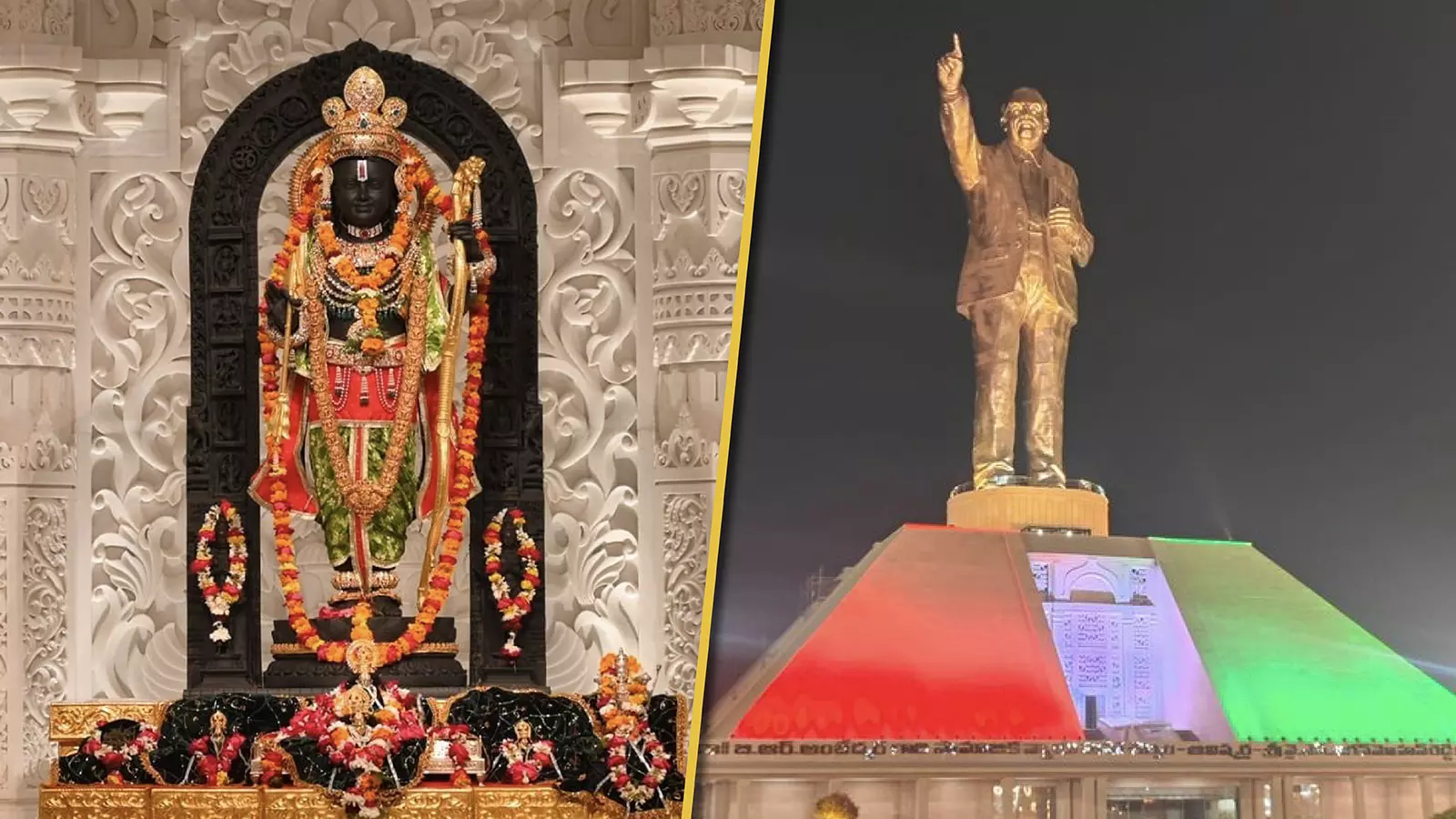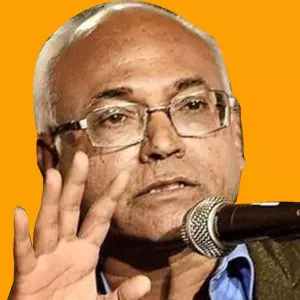
- Home
- India
- World
- Premium
- THE FEDERAL SPECIAL
- Analysis
- States
- Perspective
- Videos
- Sports
- Education
- Entertainment
- Elections
- Features
- Health
- Business
- Series
- In memoriam: Sheikh Mujibur Rahman
- Bishnoi's Men
- NEET TANGLE
- Economy Series
- Earth Day
- Kashmir’s Frozen Turbulence
- India@75
- The legend of Ramjanmabhoomi
- Liberalisation@30
- How to tame a dragon
- Celebrating biodiversity
- Farm Matters
- 50 days of solitude
- Bringing Migrants Home
- Budget 2020
- Jharkhand Votes
- The Federal Investigates
- The Federal Impact
- Vanishing Sand
- Gandhi @ 150
- Andhra Today
- Field report
- Operation Gulmarg
- Pandemic @1 Mn in India
- The Federal Year-End
- The Zero Year
- Science
- Brand studio
- Newsletter
- Elections 2024
- Events
- Home
- IndiaIndia
- World
- Analysis
- StatesStates
- PerspectivePerspective
- VideosVideos
- Sports
- Education
- Entertainment
- ElectionsElections
- Features
- Health
- BusinessBusiness
- Premium
- Loading...
Premium - Events

Some questioned how Modi, an OBC, could touch the deity at Ayodhya; at Ambedkar's monument in Vijayawada, anybody can sit anywhere, touch anything
Humanity came up with the idea of God in pre-historic times. In India, it corresponds to the Harappan civilisation, around 3000-4000 BCE.
Perhaps till the arrival of Aryans in India, the Harappans, who later were called Shudras, were mainly worshippers of nature and abstract gods. We do not know the names of the gods or whether they were male or female. The only known name is that of Pashupati.
The agrarian, artisanal and Adivasi societies of India worshipped both male and female divine figures. We do not know whether human anxiety and fear of the unknown led to idol worship or whether it was an outcome of a genuine spiritual culture.
Two temples
Whether by accident or design, two temples were inaugurated within three days — Ram temple in the north of India on January 22 and another in the south that of Babasaheb Ambedkar, on January 19.
Both the inaugurations were state functions with spiritual significance — one presided over by the Prime Minister and another by the Chief Minister of Andhra Pradesh. The Ram temple is of vaidik spiritual significance, which in contemporary times is being called Hindu. The other one is Buddhist and, in my view, it could be termed a ‘social justice temple’.
The two temples are that of Ayodhya Ram and Vijayawada Bhim, respectively. One built spending Rs 1,800 crore and the other, Rs 404 crore.
Vijayawada Bhim and Ayodhya Ram
One may wonder how Ram, an ancient god, and Ambedkar, a modern philosopher, leader, legal expert, writer and spiritual thinker who drafted the Indian Constitution, can be compared.
India, for millennia, has been projecting kings, saints and philosophers as gods. For instance, Sai Baba of Shirdi and Satya Sai Baba of Puttaparthi are projected as gods. Ambedkar’s philosophical, social, spiritual, moral, ethical and legal influence is far more widespread than the Babas'.
If the opening of the Ram temple created anxiety among some Muslims and Christians, the inauguration of the Ambedkar temple has scared the casteists. The idea of Rama Rajya is not acceptable to some; similarly, the idea of Bhim Rajya is also not acceptable to a few others.
There is a difference between these two temples. One is meant for promoting social revolution, while the other, unless it is reshaped to suit a modern democratic constitution, emphasises classical varna dharma.
Rama, the Kshatriya king
Though Prime Minister Narendra Modi made out that the Ayodhya temple is a symbol of a new era, the idol in the temple must be 'de-kshatriyarised' to be inclusive, as the Ramayana describes Ram as a Kshatriya king. A Dalit or an Adivasi must feel that this deity, too, treats them as equal.
Andhra Chief Minister Jagan Mohan Reddy had described the Bhim Statue of Social Justice as a symbol of human equality, for Dr Ambedkar stood for human liberty, equality and fraternity of all citizens.
Lord Rama, as per the Ramayana, is also known to have stood for human inequality and social hierarchy. There is no problem if the RSS/BJP wants to rewrite the narrative and tell a story that the divine is meant for equality of all including men and women in modern times.
The Muslim question
In such a changed spiritual atmosphere, Indian Muslims have to rework their man-woman relations. They must begin to reinterpret their Quran to suit the ideal of the Constitution that Ambedkar wrote.
Even the Indian Muslims are afraid of Ambedkar as his equality theory runs counter to their spiritual text — the Quran — and their day-to-day practice, as it does not liberate women followers till date.
There is a need to comparatively study the Ramayana, Quran, Buddha and his Dhamma (that Ambedkar wrote), and the Indian Constitution. We must see how the spiritual shrines, whether it is a temple or mosque or church or a vihar, accommodate the Constitution and the principles enshrined in it. I would like to see them with the eyes of Ambedkar.
Corporates and consecration
Many rich industrialists, businessmen, and cine stars of the nation, who are generally unconcerned about the exploitation of the poor, were in Ayodhya for the inauguration. The descendants of the poorest of the poor, who have been victims of untouchability from Ramayana days, and have been producing food and wealth for this nation, were present at the inauguration of the Bhim temple.
The poor go to Bhim asking for liberty, equality and fraternity, remunerative wages for their daily labour and English medium education for their children.
We do not know what the tycoons were praying for at the Ram temple. The sadhus and sanyasis who never produced even a kilo of grain were provided with a place of honour at Ayodhya, as the PM reserved the first salute for them. Can they, at least in the future, respect all human beings equally and stand against untouchability?
Spiritual education
There is no evidence in the Ramayana that the right to education was available for Shudras/Dalits/Adivasis in those times. On the contrary, there is evidence to show that the children of the food producers, animal economists, pot makers, and tillers of land were forcefully kept out of Gurukula-Sanskrit's ancient school education.
On the contrary, Bhim started schools and colleges for the children of all communities. He followed his gurus Mahatma Phule and Savitribai Phule. Neither a Dalit nor a Brahmin child was thrown out from his educational institutions.
Hence in his temple, there is a library of books, an auditorium for discussion along with his whole life displaying pictures, paintings and sculptures. Anybody can touch them.
Around the other temple, will they open a school for all children irrespective of caste to have spiritual training? Will Dalit and Brahmin youth be trained for the profession of priest in Ayodhya?
The OBC PM
Already, the Shanakaracharyas are saying that a non-Brahmin (meaning OBC PM) is consecrating the temple, and a Shudra should never be appointed as a priest. Some questioned how Modi could touch the deity. Nonetheless, he touched it.
They think that as an OBC (non-Brahmin) the PM should not have a right to consecrate the temple. For them, no Shudra/Dalit/Adivasi should be allowed to become a priest in that temple.
In the temple of Bhim, caste is of no consequence. Everybody can study Ambedkar’s history; everybody can sit in the library and read books. Everybody can touch the artefact beautifully arranged on the floor and the walls.
A God for all
The assumption that God understands all languages is part of Ambedkar’s vision. Does Ayodhya temple accept such a principle? Contrary to Christian churches, neither Hindu temples nor Islamic masjids accept the idea of plural language prayer or pooja. A spiritual democratic vision demands that God understands and allows prayer or pooja to be performed in any language that the devotees know.
If Modi and Mohan Bhagwat’s Rama is a new era God, he too should allow such multi-language pooja. They should also allow Dalits and women to become poojaris. That will force Indian Muslims, Christians and Buddhists to follow suit.
If such a new era starts in Ayodhya, India will become a Vishwaguru. Otherwise, it will remain Vishwashishya only.
(The Federal seeks to present views and opinions from all sides of the spectrum. The information, ideas or opinions in the articles are of the author and do not necessarily reflect the views of The Federal.)


